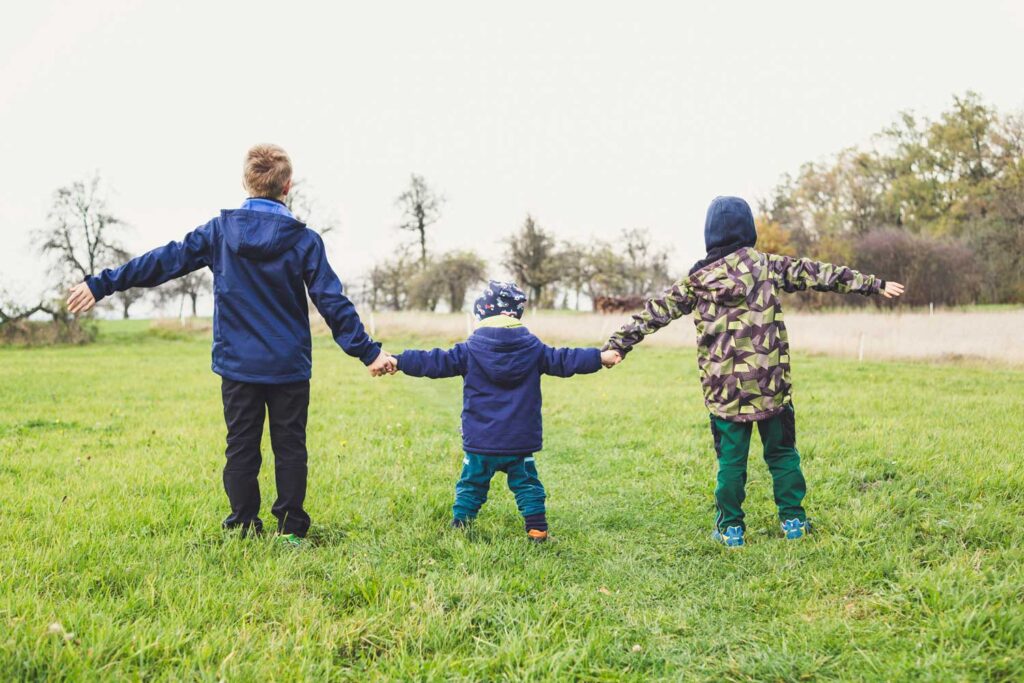
Autism spectrum disorder (ASD) is a neurodevelopmental disorder characterized by persistent deficits in social interaction and communication as well as repetitive behaviors, limited or intense interests, and atypical sensory issues.
ASD affects every person with the diagnosis a little bit differently. Not only will everyone with ASD experience varying symptoms (e.g., one child may be nonverbal; another may not be and might even talk excessively), but the severity can differ, too. While Asperger syndrome was once a separate diagnosis from ASD, it is no longer considered a diagnosis at all. Now, ASD encompasses the behavioral characteristics of what was once considered Asperger syndrome.
There are 3 “levels” of autism that indicate the level of support an individual may need.
Level 1: Low support needs.
Level 2: Moderate support needs.
Level 3: High support needs.
Frequently, kids with ASD will have an additional co-occurring condition, such as ADHD or a learning disability, but this is not true for all. The way a child experiences autism spectrum disorder can vary, but there are ways to welcome a child and their family regardless.
There are many reasons why a child with autism spectrum disorder may struggle at holiday gatherings. These include but aren’t limited to changes in routine, new people, foods, or activities, and sensory overload or feeling overstimulated.
With that in mind, here are ten ways to include children with autism in your family gatherings this year.
1. Discuss A Child’s Needs With Their Caregiver(s)
The first and the best thing you can do for a child with ASD who is set to attend your gathering is to call the child’s parent or caregiver for information. Ask the caregiver(s) about their child’s needs and what you can do to best accommodate them. Again, every child with autism is different. One child’s needs might be totally different from another’s. Additionally, let the parent or caregiver know about the steps you have taken to make the event more comfortable for a child. For example, “I’ll be mindful not to play loud music/TV/etc. Is that something that’ll be helpful? What else should I know?” Show that you welcome the family and respect their needs.
2. Ask About Food-Related Issues
It’s common for kids with ASD to have sensory issues that make it hard to try new foods. When you talk to the child’s parent or caregiver, ask about the foods that the child is comfortable with and what you can supply to help. Note that for children with sensory issues, food needs can be highly specific. For example, some children will only be comfortable with a certain brand of their safe food (e.g., one brand of chicken nuggets, only the small bags of a specific brand of crackers or chips). You can even confirm that you bought the correct product with the family after the food is purchased by texting a picture.
Some families may opt to bring separate foods for the child in the case that sensory issues or related concerns, like ARFID, are extreme. If applicable, respect the family’s need to bring their own food.
3. Send Photos Before The Event
Many kids with ASD feel best going to a new place or trying new things if they see pictures first. Change is tough for kids on the spectrum, so seeing pictures of who might be there (e.g., your immediate family members, any pets), the home, or even the types of food that’ll be present in advance can be beneficial. Whether you share pictures digitally or send physical copies, this is a great way to increase a child’s comfort. If you live nearby, you might even ask to stop by and say hello to the child in advance while you share the pictures.
4. Designate A “Quiet Spot” In The Home
A child with autism may need to take breaks at some point during your family gathering. Create a safe and quiet spot in your home. Pillows, blankets, and toys are ideas of what to add to the room or area. Make sure that you remove any potentially unsafe or breakable objects. Let the child’s parent or caregiver know about this space in advance so that they know it’s there for the child if needed. For parents who know that their child will likely need to take a break at a family gathering, this can be comforting.
5. Provide Sensory Objects And Toys
Inexpensive sensory objects and toys can be found at most retailers, including dollar stores and craft stores in many cases. Create a small party bag of child-safe sensory objects and toys like play dough or putty, stress balls, slime, pop-its, or fidget spinners to welcome the child with. Again, talking to the parent first can be helpful. The parent or guardian will often have an idea as to what the child will like. Similarly, they will be able to tell you if there’s a toy or object they don’t want the child to play with. You can even hand party bags out to all children who attend the event so as to not single out with child. The caretaker(s) can also be invited to bring the child’s preferred items.
6. Be Mindful Of Noise And Decor
For children who get overstimulated easily, bright lights, strong scents, and loud noises can be overwhelming. Especially with new people or more people than they’re used to around. If there’s anything that might be too overwhelming for a child (such as an intense air freshener or candle, loud music, and so on), avoid including it during the gathering. This is another thing you may want to discuss with parents or caregivers, as sensory issues can vary from person to person.
7. Ask The Child About Their Interests
Many people with autism spectrum disorder have intense, specific interests. Some children will be more apt to interact if you ask about their interests. Even a general question like, “I heard that you like computer games. What games do you like?” can be inclusive and helpful for kids who are able to interact in this way.
8. Don’t Force Interactions
Engage the child and involve them, but do not go overboard or force them to do anything they don’t want to. Let parents take care of things and soothe the child if necessary.
Additionally, do not feel offended if a child is unable to interact, covers their eyes or ears, appears anxious or upset when spoken to, or does not want to play with other kids. Likely, they’re taking in new stimuli and feel overwhelmed.
Some kids will return or be more able to interact after being left alone to adjust. Others will not be able to. Either way, respect where they’re at.
9. Teach Other Children About Autism
If other children will be present, such as your own, use this as a learning opportunity to talk about autism. In a kind, positive light, talk about how the child may act differently and why. Set boundaries about what to do or say if needed. There are child-friendly videos and books about autism spectrum disorder that may be helpful.
10. Offer An Alternative To The Event
Some kids with ASD will be in a space where they can attend a holiday event. Others won’t. If children aren’t able to attend the event, there are still ways to involve a child with ASD and spend time with their family. Here are some things you can do:
- Make a drop-off. You might drop off a gift or say hello quickly.
- Have a quick visit at their home. Ask to plan a short visit at the child’s home over the holiday season.
- Plan a special activity together. If you can find one in your area, ask the family if they’d like to go to a special activity designated for children with disabilities. For example, many holiday events for kids will have a special day or chunk of time set aside (like sensory Santa hours) for kids who might be overwhelmed otherwise. You can also plan for an activity independently.
How Can I Help My Child With ASD?
Parents of children with autism spectrum disorder may wonder how to help their own child with the condition. Everyone with ASD will have different goals, and the right care can help you meet them. If your child lives with autism spectrum disorder and is in need of support, Behaven Kids can help. We offer Applied Behavior Analysis (ABA) as well as other types of therapy for children with a range of mental and behavioral health needs. ABA therapy is the standard treatment recommendation for children with autism spectrum disorder. ABA is conducted by trained professionals and can help children with daily life functioning, social skills, learning, and more. We also offer day programs that provide outpatient support five days per week. During the admission process, we’ll recommend a level of care for your child.
We’re here to answer your questions. Click here to learn about our services or call us at 1-402-926-4373.
Conclusion
There are numerous ways to include children with ASD in your family gathering this holiday season and make them more comfortable. However, it is crucial to remember that every child is unique. Talk with a child’s caregiver(s) to determine a child’s specific needs and how you can help. If your own child has ASD and is in need of support, Behaven Kids can help you meet your goals.
